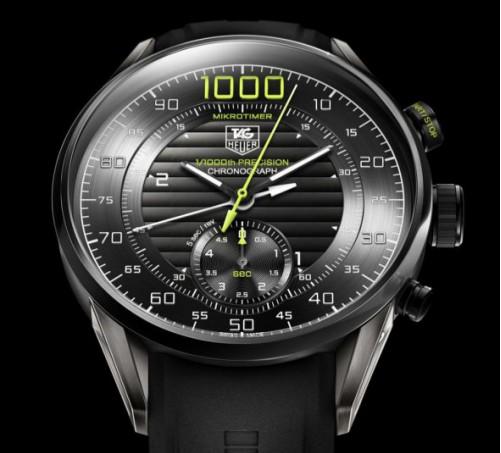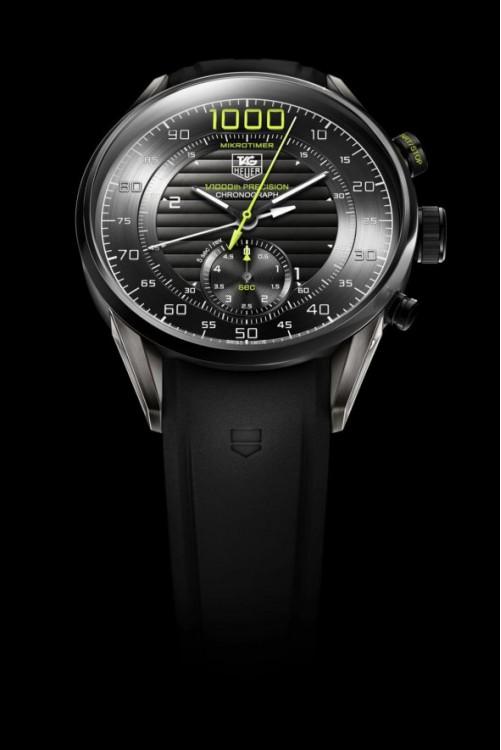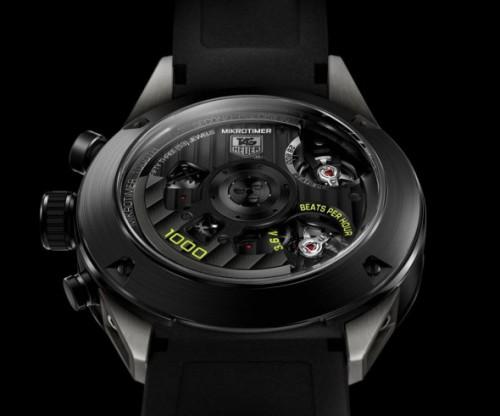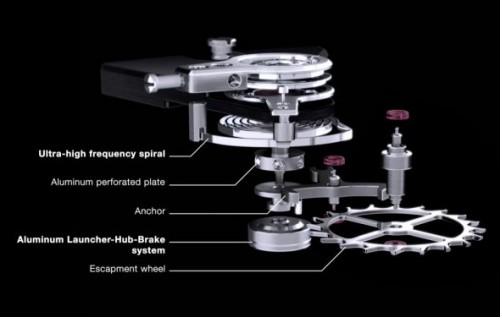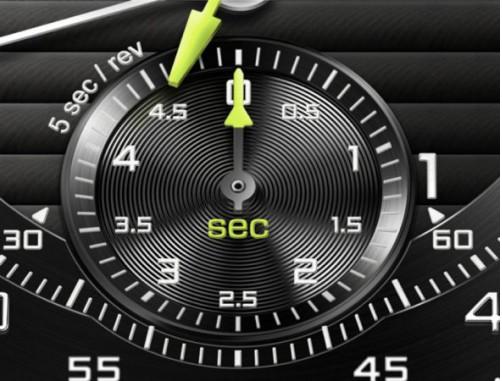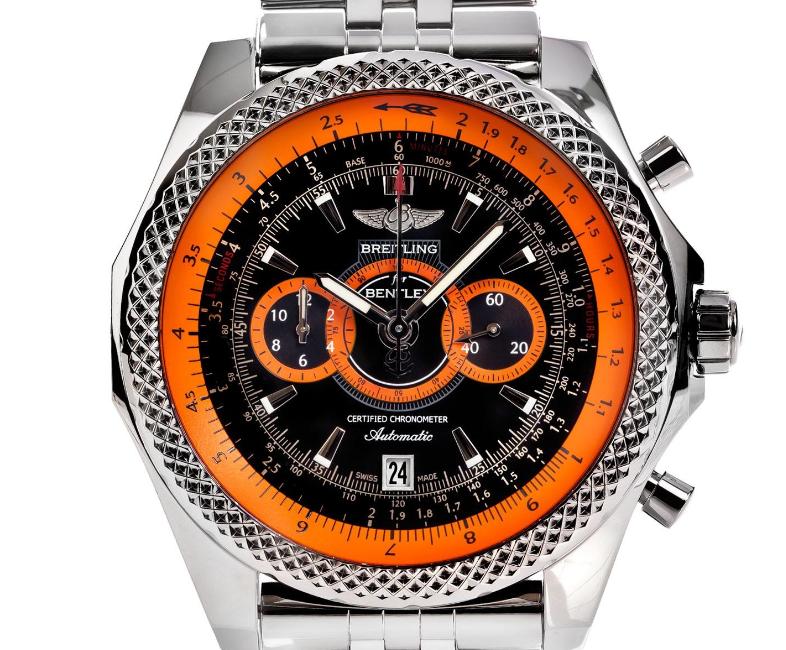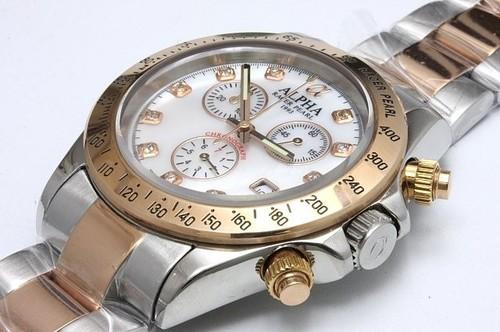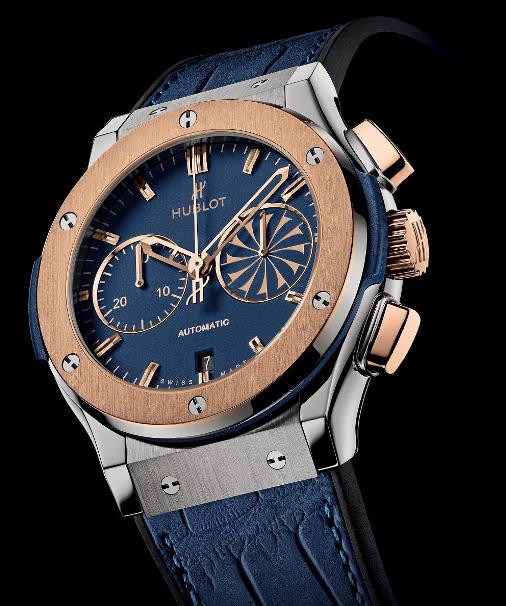The world’s first-ever mechanical chronograph to measure and display 1/1,000th of a second – making it 125 times more accurate than most existing mechanical chronographs and 10 times faster than the Heuer Carrera Mikrograph 1/100th
TAG Heuer just announced via a multi media blitzing press conference complete with live feeds to Facebook and Twitter, the launch of the MIKROTIMER Flying 1000 Chronograph — the world’s first mechanical chronograph able to measure and display time measurements of 1/1,000th of a second. That’s one-thousandth, which is currently 125 times more accurate than any mechanical chronograph on the market and 10 times faster than TAG Heuer’s Carrera MIKROGRAPH 1/100th Second watch, which was first presented in Geneva in January of this year.
So within the space of two months Team Tag Heuer have produced not one but two ground breaking watches adding to their already impressive pedigree of patented world first starting with the MIKROGRAPH in 1916, the first-ever 1/100th of a second mechanical stopwatch. Introduced by Charles-August Heuer, the MIKROGRAPH 1/50th and 1/100th, two patented stopwatches beating respectively at 180,000 and 360,000 beats per hour.
Putting it into context
To put it into context in 1/1,000th of a second a Formula One race car at full throttle travels about ten centimetres – perhaps the length of a finger but it can mean the difference between second place and a World Championship.
But even though it’s a tiny fraction of time, a lot can happen in 1/1000th of a second:
Usain Bolt ran 1.2 centimetres while establishing his new 100m world record of 9.58 seconds
A cheetah at top speed travels 3 centimetres
The Maglev train between Pudong International Airport and Shanghai travels 14 centimeters
An Airbus 380 between Zurich and Singapore flies 24 centimetres
A supersonic airplane breaking Mach 1 flies 33 centimetres
An M16 bullet flies 97 centimetres
Apollo 10 travelled 10 metres while establishing the fastest-ever speed for a manned craft in 1969
The Earth rotates 29.8 metres around the Sun
A fast neutron travels 10 kilometres
And light travels 300 kilometres
It should be stressed that the MIKROTIMER Flying 1000 is only a concept watch at this stage and the watch being presented at Baselworld 2011 is a one off, so refinements and revisions are quite likely before it goes on sale in the middle of this year. Over the last 12 days, the team estimate that they have put in five months of working time to get the concept watch ready for Basel. No sleep, but think of the overtime.
Incredibly, the first time that TAG Heuer knew that the MIKROTIMER Flying 1000 would work in reality rather than on paper was on 11 March 2011 just 12 days ago.
When it goes on sale the watch will be limited to just 150 pieces, each encased in a beautiful rose gold case, so you’re going to need split second timing to get your hands on one.
Inside the MIKROTIMER Flying 1000
TAG Heuer has broadened its research into what is known as spiral-based regulating systems. The result i s an escapement developed together with Atokalpa and vibrating at the mind-blowing speed of 3,600,000 beats-per-hour — more than 3 times faster than the pistons of an F1 engine cranked to maximum speed. The speed and high-frequency of the MIKROTIMER are mind-blowing- 500hz beating at 3.6 million beats per hour- 10 times faster than the MIKROGRAPH and 100-times faster than an El Primero. And that means that the central chrono hand completes a full rotation 10-times every second.
The flying central hand of the MIKROTIMER Flying 1000 makes an astounding 10 rotations per second, indicating 1/1000th of a second and 1/100th of a second on a scale on the external part of the dial, which has 100 graduations over 360°. A second, smaller central hand indicates minutes (TAG Heuer Patent pending) and 1/12th of a minute on a 150-second scale. A counter at 6 o’clock displays 1/10th of a second, calibrated to 5 seconds.
At a glance reading
This unique dial-scale display system allows direct, instantaneous reading of minutes, seconds and 1/1,000th, making this the only mechanical chronograph for sporting events like the Formula 1, where 1,000-of-a-second accuracy is essential. It puts the MIKROTIMER Flying 1000 right up there among the most intricate “Grande Complication” ever developed in mechanical watchmaking.
With a black Titanium Carbide coated case with titanium horns and the black ruthenium-treated movement inside, the MIKROTIMER Flying 1000 is still very much in the Concept Stage. As was the case of the Monaco V4, further development will be needed to ensure the same over-time reliability and precision demanded of all Tag Heuer watches.
Looks like there’s going to be plenty more late nights for Team Tag Heuer.

